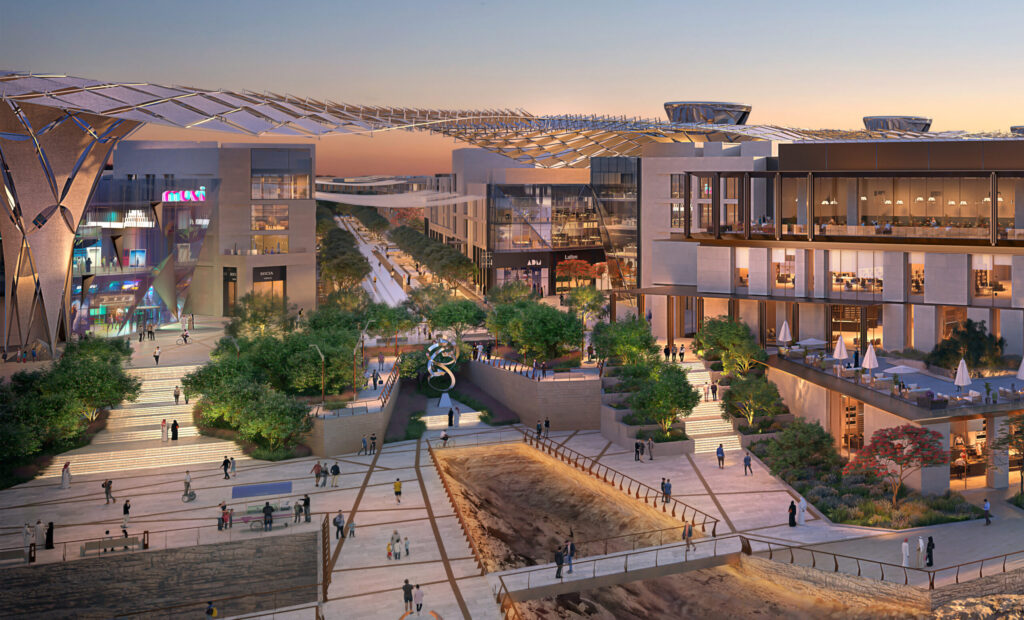
It is no secret that the rise of E-commerce, quickly accelerated by changes in people’s spending habits and the realities of our world economy, has resulted in physical retail spaces suffering losses in both consumer and business interest.
However, while shopping for our favourite brands has never been easier for the average consumer, and that is unlikely to ever change, retailers can still thrive, generate revenue, and deliver unique experiences for their community, simply by learning from the driving factors that have attracted consumers, both disabled and non-disabled, to prefer shopping online.
The most obvious, is, of course, convenience. But another less spoken about reason and the competitive trump card is accessibility. Due to the static nature of built environments, structural changes to retail spaces are rarely seen and few and far between, and it’s this lack of consideration for inclusion that leaves many disabled people simply unable to even get through the front door, leading to that loss of interest in going out to visit these spaces, no matter which businesses set up shop therein.
In essence, being able to adapt to the needs of every type of consumer, and recognize that disabled people not only want to use these spaces but have the combined spending power to generate significant revenue are the first steps for retailers to best what the digital world offers. Moreover, no matter what online spaces can offer when it comes to convenience, it cannot offer the same type of interactive, social, explorative experience that discovering a retail outlet can. So in this blog, we’re going to go over steps retailers and their designers can take to ensure accessibility, inclusivity, and their future success – utilising our lived experience as a team of disabled people, and our work for clients in the sector such as Woking Town Square in London and the famous McArthur Glen Retail Outlet at Cheshire Oaks.
Mobility-impaired wheelchair and scooter users often struggle in retail spaces due to the lack of space, particularly during peak visitor times. So when outlining spatial requirements, ensuring that pathways around the site and the outlets themselves are roomy is vital. Going beyond the minimum design requirements in this way will make for an enjoyable shopping experience overall.
Moreover, due to height differences, it is important to incorporate split-height counters, which will also benefit children and visitors of short stature. You can get creative by creating tiered displays and training staff in disability awareness, preparing them to help or assist with difficult-to-reach items.

Accessible facilities and wayfinding
Like with the shelves and counters, ensuring that payment areas such as till conveyor belts and self-service payment machines are height adjustable will help make carrying out transactions easier for the aforementioned groups.
Moreover, any other store equipment like basket racks or scan-as-you-shop equipment must also be accessible and provided at multiple heights.
Store signage must also be decipherable and easy to understand, particularly for the various types of people with cognitive disabilities. This can be maximised by ensuring that signage utilises strong colour contrast between the text and the background. Incorporating braille as a standard would also be beneficial to those with visual impairments.
Wayfinding incorporates so much more than just signage, however. Making regular audio announcements or additional visual cues such as colour coding can greatly increase the understanding of where to find items, within your retail environment.
Direct Access offers our own Tactile map boards, which incorporate braille, colour coding, and contrast, while also incorporating British Sign Language and Audio-Described content.
If your retail outlet has shops stocking clothing, ensure that on-site fitting rooms offer at least one accessible stall with grab bars, seating, and lower hooks, to provide a comfortable shopping experience. Equally, ensure that restrooms in all shops operate on a similar standard by offering customers at least one legally compliant accessible restroom. If there is space to provide one, a Changing Places facility is also best practice. Doing this demonstrates to disabled people that you are willing to go beyond the minimum standard, increasing the likelihood of multiple visits and generating word-of-mouth in communities of disabled people with limited options for shopping.
If you want to show disabled people that your site is accessible before they have even stepped foot in the door, in addition to all of the other recommendations, ensure that your entrance is readily accessible by installing ramps or leveled entrances instead of steps. Automatic doors or wide manual doors in addition to or in place of a standard door communicated to potential customers that your shop is a welcoming environment.

All of these adjustments barely scratch the surface of what goes into making a truly accessible retail environment and are more general rules to go by than specific guidelines.
In order to discover what suits your particular plan, we would recommend hiring accessibility consultants, like Direct Access, to collaborate on design choices with architects to truly deliver an all-inclusive environment.
If your site is one of the many retail outlets that has already been built and is looking to enhance accessibility measures, our team of auditors, who are disabled themselves, can carry out an on-site access audit – helping you embrace the principles of universal design and create a positive experience for your entire customer base.
What are these universal design principles, you might be asking? The principles are based in;
Equitable use of your space – the aesthetic design, consideration for features and equipment
Flexibility of use – the space accommodating a wide range of preferences and needs,
Intuitive use – ease at which visitors can understand how to use the space.
Perceptibility – your accessible media formats; braille signage, BSL videos, large print menus
Tolerance for error – minimising the risk of hazards and adversity
Low physical effort – ensuring that the space does not require visitors to exude physical effort that might tire or harm them.
Looking to get started on your journey to inclusion? Contact the Direct Access team today!